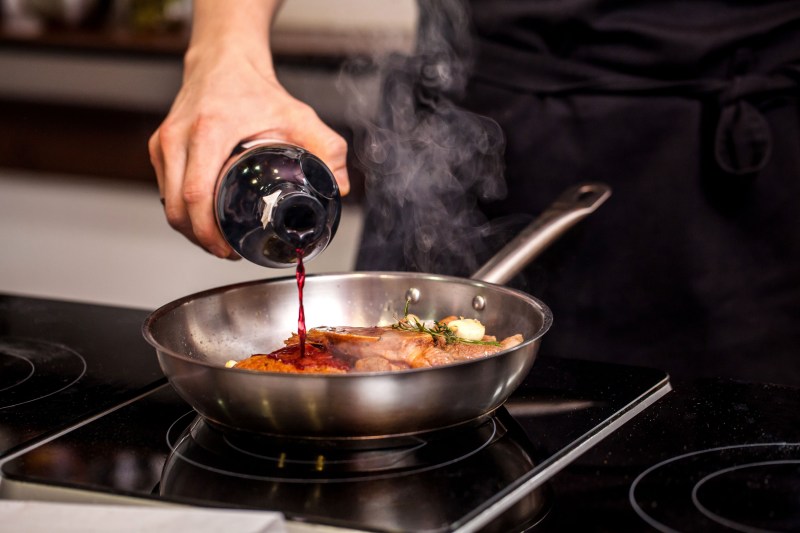
We’ve all seen them. Those stale, falsely rustic home decor signs that boast tired sayings like, “I love cooking with wine, sometimes I even put it in the food!” or “Drink wine. It isn’t good to keep things bottled up.” The chortles these decor pieces get, however frequently they can be found at discount retailers, are never in short supply. People love to boast their love for wine, and if we’re totally honest, we’re no exception. We love a good bottle both for its drinkability and its generosity in flavoring a dish. But when it comes to using this sacred nectar in the cooking process, things can sometimes become a bit confusing. So we’re here to answer all of those burning questions you may have when it comes to cooking with wine.
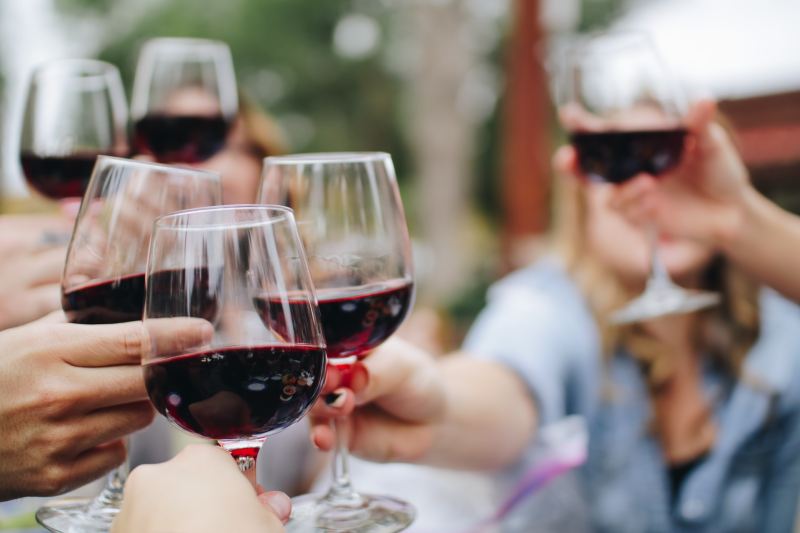
Why cook with wine?
Apart from its obvious sexiness, there are lots of other reasons to uncork a bottle when whipping up a delicious meal. In addition to the bold, unique, rich flavor wine adds to a dish, its acidity can also help to tenderize meat, poultry, and seafood. Depending on the wine used and the dish being prepared, as the alcohol burns off, the complexity and flavor of the wine will concentrate, making for an extremely flavorful dish.
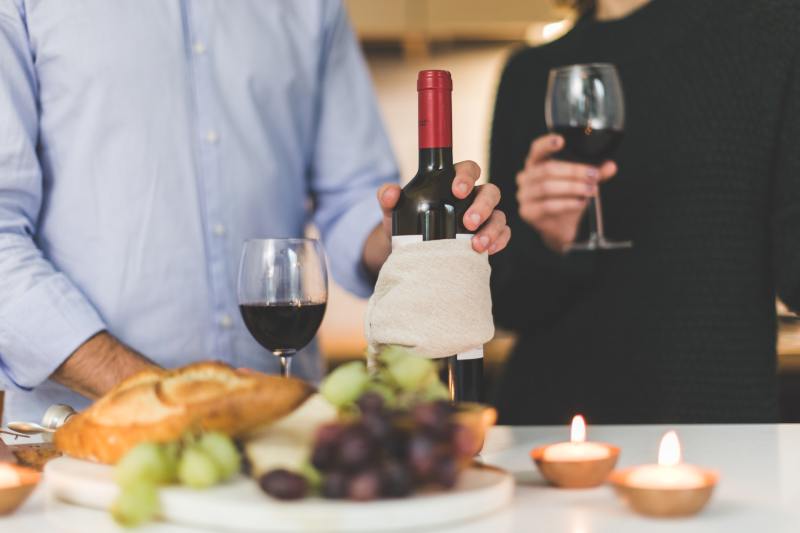
Is it true that cooking wine can be of lesser quality?
The answer to this one is slightly complex. Here’s the short answer — don’t cook with two-buck-chuck. Why not? Because, in almost every instance, it’s garbage. And speaking of garbage, never, ever cook with anything labeled “Cooking Wine.” These concoctions are almost always horrible blends of the worst possible wine, way too much salt, preservatives, and artificial sweeteners. Just say no and get a bottle of the real stuff for a few bucks more. This doesn’t mean that the wine that you cook with has to be the most expensive bottle in the liquor store. There are plenty of affordable options out there that don’t taste like gasoline.
The simple truth is, even though (when done correctly) the alcohol burns off in the cooking process, the flavor of the wine remains. Meaning, if you have a particularly tannic wine, that bitterness will present itself in your dish. Cooking with a particularly sweet Moscato or Riesling will add accentuated sweetness to your meal. Yes, the alcohol may cook off, but the flavor profile remains, and often, is even accentuated. So it’s important to pay attention to the flavor of your wine, not just the price tag.
It’s a mistake to think that more expensive always means better tasting. There are a plethora of budget-friendly bottles out there that are delicious, despite their low cost. Taste your wine before adding it to your dish. If you like the way it tastes on its own, chances are you’ll like the way it presents itself in your cooking.
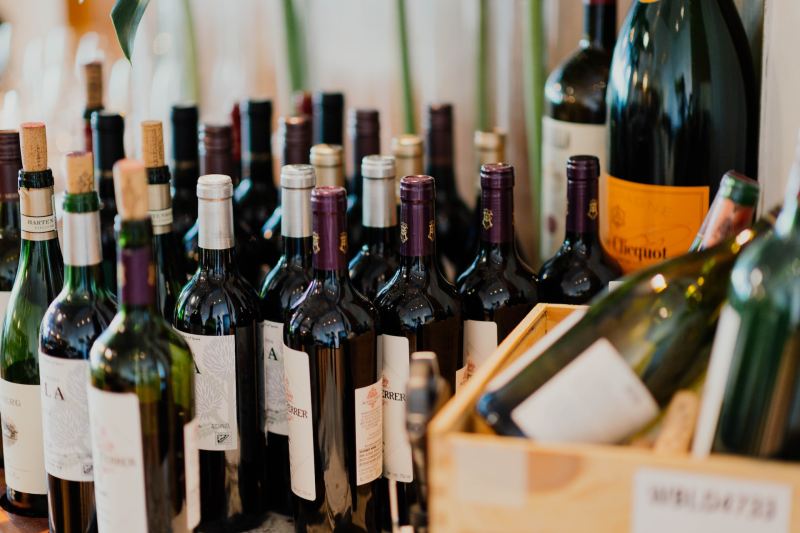
Which wines to use for cooking
Not all wines are created equal, of course. And when it comes to cooking, knowing a bit about the flavor profiles of wine will come in very handy. Though, in the interest of keeping guidelines simple — dry wine is better for cooking. Of course, there are exceptions when it comes to desserts or sweeter dishes, but for the most part, dry reds and dry whites are the best choices for cooking. This is because there is less residual sugar in drier wines. The exceptions to this rule are heavily oaked bottles — both red and white — because the oak and butter notes can cause the dish to develop bitter flavors.
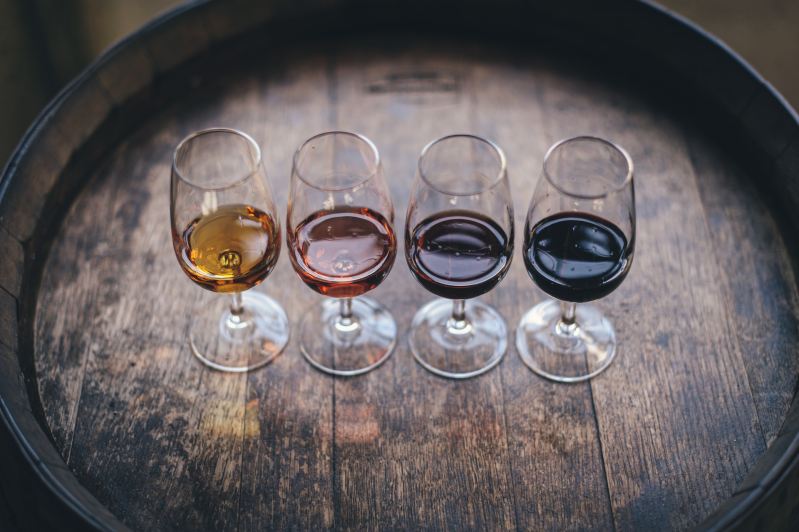
Best whites/reds to cook with
So which red and white wines are best for cooking? When it comes to cooking with white wines, Sauvignon Blancs, Pinot Grigios, and dry Vermouths are great choices. As for red wines, safe choices include Merlots, Côtes du Rhône Cabernets, and Pinot Noirs.

How to cook with wine
There are a multitude of ways to incorporate wine into your dishes, in both great and small amounts. A recipe may call for a braise, a reduction, or a deglazing, for example.
Deglazing
If you’re new to cooking with red wine or white, you may want to start small with a simple deglazing. This means simply pour a little bit of wine into a pot where you’ve just browned an ingredient that will continue to cook either in a braise or a sautee. The goal of deglazing is to unstick all of the browned bits from the bottom of the pan and incorporate them into your dish with the help of a liquid. Stock, broth, or even water are often used for deglazing a pan, but wine will add a tremendous depth of flavor.
Reduction
Wine reductions are also very common in recipes. A wine reduction is what happens when wine has been cooked over heat and concentrated to a more intense, thicker version of itself. This method is often used for sauces and even cocktails.
Braising
Braising in wine is a very popular choice for both hearty and light dishes alike. Stews and short ribs are often prepared in a red wine braise, while fish or fruits can be poached in white wine, making for delicate and exquisite dishes.



